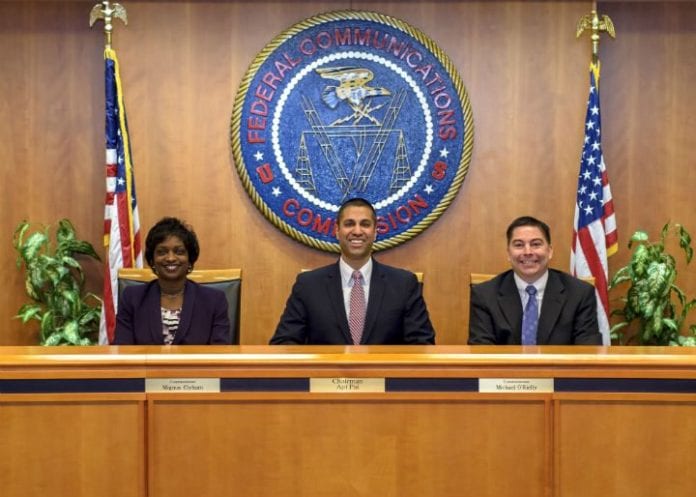During a speech at Carnegie Mellon University, FCC Chairman Ajit Pai said he would move on opening up spectrum above 95 GHz as a test bed for 5G technology.
Federal Communications Commission Chairman Ajit Pai is looking for the government agency to maintain “5G” spectrum support initiatives began by his predecessor, including the possibility of opening up access to new airwaves in bands above 95 GHz.
During a speech this week at Carnegie Mellon University’s Software Engineering Institute in Pittsburgh, Pai said the FCC is looking at allowing applications for experimentation using spectrum above the 95 GHz band to operate under Section 7 of the Telecommunications Act, which calls for the commission to act within one year on those applications deemed in the public interest.
“Those frequencies haven’t traditionally been used for mobile wireless technologies,” Pai noted in his speech. “But I believe that instead of having regulators decide which frequencies are useful, we should put spectrum out there as a test bed and leave it to the innovators to figure out how to use it. … And this determination, in turn, could accelerate the deployment of cutting-edge wireless services and other innovations.”
Pai said he was putting the FCC’s Office of Engineering and Technology in charge of compliance with Section 7 regulations.
“Going forward, if a petition or application is filed with the FCC proposing a new technology or service, we’ll supply an answer within a year,” Pai said. “To be clear, our answer won’t necessarily be yes. There could be many reasons why a new technology or service wouldn’t be in the public interest, like interference with an existing service. But we will provide an answer with dispatch. Also, it’s important to note that a Section 7 petitioner must actually propose a new technology or service. OET will make an independent assessment of this. And if the technology or service isn’t new, it won’t qualify for speedier treatment.”
Pai cited the FCC’s previous work under the Spectrum Frontiers initiative, which was approved last year under the leadership of Tom Wheeler. The initiative called for the government to open up nearly 11 gigahertz of spectrum above the 24 GHz band in support of mobile telecom services, with specific resources to include 3.85 gigahertz for licensed use in the 28 GHz, 37 GHz and 39 GHz bands, and seven gigahertz for unlicensed use across the 64 GHz to 71 GHz bands.
As part of those proceedings, the FCC also asked for comments on the potential use of spectrum above the 95 GHz band in support of planned 5G deployments.
Pai also noted FCC support for telecommunication operators to begin 5G technology trials using some of the bands included in the Spectrum Frontiers proceedings, which operators have already begun to undertake.
“The United States must continue to lead the world in wireless innovation,” Pai explained. “We led the way in the deployment of 4G LTE and we must do the same in 5G. With 5G, we can use millimeter wave spectrum to produce multigigabit speeds. 5G could transform the wireless world and provide even more robust competition to wired networks.”
Bored? Why not follow me on Twitter.

